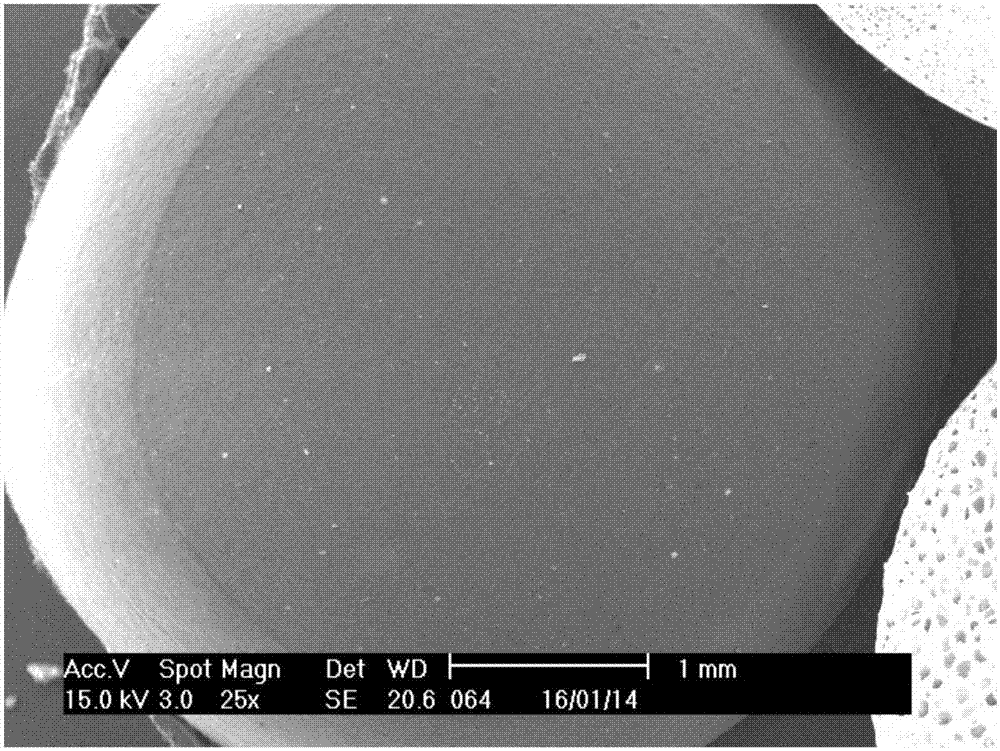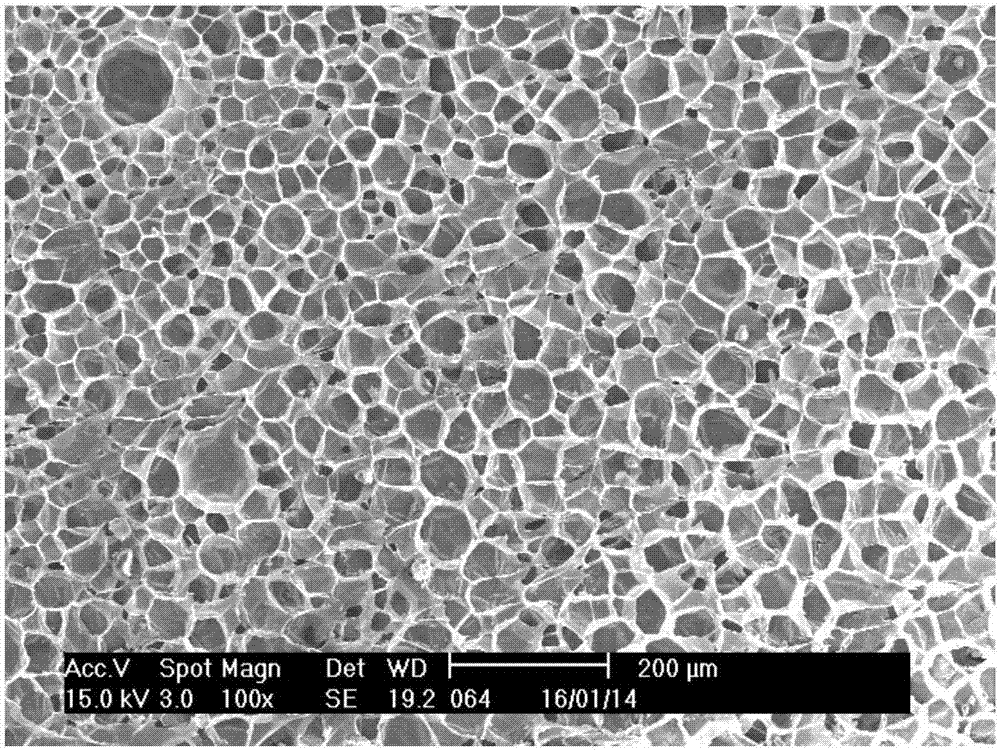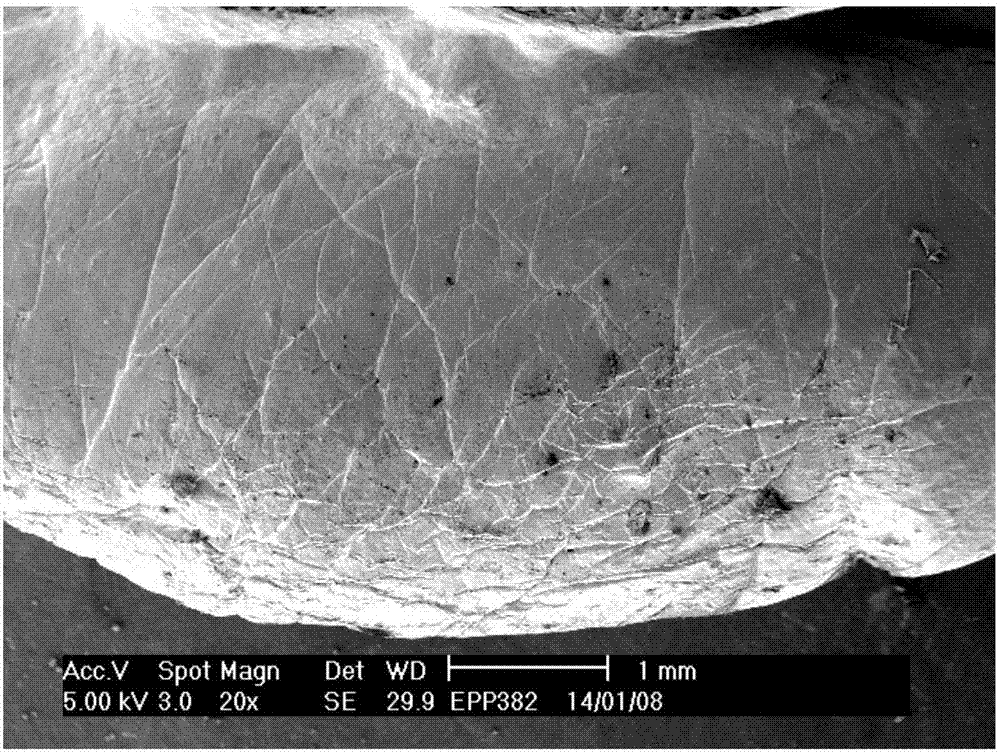Flame retardant antistatic polypropylene composition and foamed bead prepared therefrom
A polypropylene composition and flame-retardant polypropylene technology, applied in the polymer field, can solve the problems of poor low-temperature impact resistance of polypropylene, difficulty in blending polypropylene base resin, short-acting antistatic agent, etc. The effect of efficiency
- Summary
- Abstract
- Description
- Claims
- Application Information
AI Technical Summary
Problems solved by technology
Method used
Image
Examples
preparation example Construction
[0203] Preparation of Polypropylene Base Resin HMSPP
[0204] Preparation of Polypropylene Base Resin HMSPP701
[0205] The propylene polymerization reaction is carried out on a polypropylene unit, and the main equipment of the unit includes a prepolymerization reactor, a first loop reactor, a second loop reactor and a third gas phase reactor. The polymerization method and steps are as follows.
[0206] (1) Prepolymerization reaction
[0207] The main catalyst (DQC-401 catalyst, provided by Beijing Aoda Branch of Sinopec Catalyst Company), co-catalyst (triethylaluminum), and the first external electron donor (isopropylcyclopentyldimethoxysilane, IPCPMS) were After pre-contacting at 6°C for 20 minutes, it is continuously fed into a continuous stirred tank prepolymerization reactor for prepolymerization. The flow of triethylaluminum (TEA) entering the prepolymerization reactor is 6.33g / hr, the flow of isopropylcyclopentyldimethoxysilane is 0.3g / hr, the flow of main catalyst i...
Embodiment 1
[0220] The raw material ratio and reaction conditions of the flame retardant, polypropylene composition and expanded beads prepared in this example are listed in Table 3 and Table 4, and Table 4 also lists the performance parameters of the expanded beads. In the table, flame retardant component A is phosphine oxide, flame retardant component B is a transition metal salt, and flame retardant component C is an inorganic flame retardant component.
[0221] (1) Preparation of (halogen-free) flame retardant
[0222] Add 7kg of triphenylphosphine oxide and cobalt formate into ethanol, stir at a rate of 100rpm, and then use microwave to heat the mixture under stirring, with a heating power of 50W, a temperature of 40°C, and a heating time of 4h. The material after microwave heating reaction is carried out supercritical drying, obtains the chelate Co(CHO of the formation of triphenylphosphine oxide and cobalt formate 2 ) 2 (OPPh 3 ) 2 .
[0223] (2) Preparation of (halogen-free) ...
Embodiment 2
[0240] The preparation method of flame retardant, composite flame retardant, carbon nanofiber antistatic agent, flame retardant antistatic polypropylene composition and expanded beads is similar to embodiment 1, and difference is that shown in table 3 and 4 Raw material formulations and reaction conditions. For example, this embodiment uses HMSPP702, and the halogen-free flame retardant formed is the chelate Ni(CHO) formed by trioctylphosphine oxide and nickel formate. 2 ) 2 (OPot 3 ) 2 , the prepared carbon nanofiber antistatic agent contains nickel 3wt%.
PUM
| Property | Measurement | Unit |
|---|---|---|
| Density | aaaaa | aaaaa |
Abstract
Description
Claims
Application Information
 Login to View More
Login to View More - Generate Ideas
- Intellectual Property
- Life Sciences
- Materials
- Tech Scout
- Unparalleled Data Quality
- Higher Quality Content
- 60% Fewer Hallucinations
Browse by: Latest US Patents, China's latest patents, Technical Efficacy Thesaurus, Application Domain, Technology Topic, Popular Technical Reports.
© 2025 PatSnap. All rights reserved.Legal|Privacy policy|Modern Slavery Act Transparency Statement|Sitemap|About US| Contact US: help@patsnap.com



